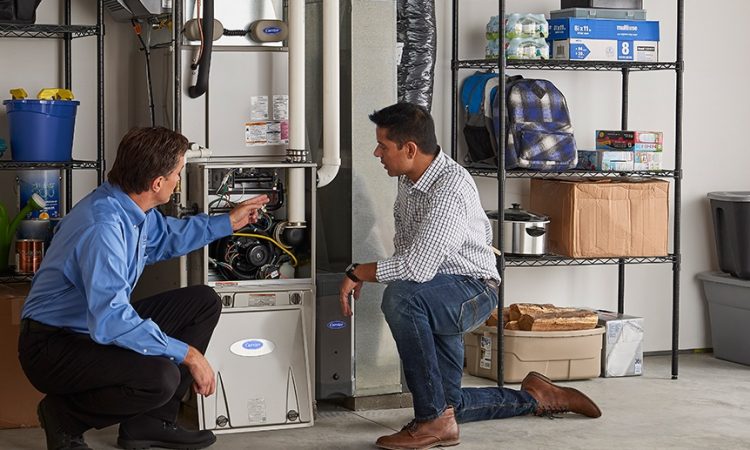
When the chilly winter winds start to blow, there’s nothing more comforting than stepping into a warm and cozy home. For many homeowners, having a reliable heating system is not just a luxury—it’s a necessity. This is where furnace installation comes in. Installing a furnace is one of the best ways to ensure your home stays comfortable during the cold months.
In this article, we’ll explore everything you need to know about furnace installation, from choosing the right type of furnace to understanding the installation process and its benefits.
What Is a Furnace and Why Is It Important?
A furnace is a central heating system that provides warmth to your home. It works by blowing heated air through ducts, which then distribute the warm air to different rooms via grills or registers. Furnaces are typically powered by natural gas, propane, oil, or electricity.
Proper furnace installation is crucial to ensuring efficient performance and energy savings. An incorrectly installed furnace can lead to higher energy bills, frequent repairs, and even potential safety hazards.
Choosing the Right Furnace for Your Home
Before you dive into the furnace installation process, it’s essential to select the right furnace for your home. Here are some key factors to consider:
1. Fuel Type
Furnaces come in different fuel options, such as natural gas, oil, propane, or electricity. The best choice depends on what’s readily available and cost-effective in your area. Natural gas furnaces are the most common, as they tend to be more energy-efficient and cost-effective in the long run.
2. Energy Efficiency
Furnaces have an efficiency rating called the Annual Fuel Utilization Efficiency (AFUE). The higher the AFUE rating, the more efficient the furnace is. A high-efficiency furnace may have a higher upfront cost, but it can save you significant money on your energy bills over time.
3. Size and Heating Capacity
It’s vital to choose a furnace with the right heating capacity for your home. A furnace that’s too small won’t provide enough heat, while an oversized furnace will consume more energy than necessary. An HVAC professional can help you determine the appropriate size based on the square footage of your home.
4. Cost
Furnaces come in a wide range of prices depending on their type, brand, and efficiency. Consider both the initial installation cost and the long-term operational costs when selecting a furnace. High-efficiency models may cost more upfront but will save you money over time with reduced energy consumption.
The Furnace Installation Process
Once you’ve selected the right furnace for your home, the next step is installation. Furnace installation is not a DIY project—it requires a licensed professional to ensure safety and proper functioning. Here’s an overview of the installation process:
1. Assessing Your Home
Before starting the installation, the HVAC technician will assess your home’s current heating system, ductwork, and ventilation. They’ll also check for any issues that need to be addressed, such as poor airflow or inadequate insulation.
2. Removing the Old Furnace
If you’re replacing an existing furnace, the technician will first safely disconnect and remove the old unit. This involves shutting off the power and gas supply, removing the ductwork, and disposing of the old furnace properly.
3. Installing the New Furnace
The new furnace is installed in the same location as the old one or in a new spot if necessary. The technician will connect the furnace to the existing ductwork, gas lines, and electrical wiring, ensuring everything is sealed and secure.
4. Testing the System
Once the furnace is installed, the HVAC professional will test the system to ensure it’s working correctly. This includes checking the thermostat, airflow, and combustion efficiency. They’ll also make sure there are no gas leaks and that the furnace is running safely.
5. Providing Maintenance Tips
Finally, the technician will provide tips on how to maintain your new furnace, such as changing the air filters regularly and scheduling annual maintenance checks. Proper maintenance can extend the life of your furnace and keep it running efficiently.
Benefits of Professional Furnace Installation
Hiring a professional for furnace installation comes with several benefits:
- Safety: Gas and electrical connections must be handled with care. Professional technicians have the expertise to install the furnace safely, reducing the risk of gas leaks or electrical hazards.
- Efficiency: A well-installed furnace operates at peak efficiency, which can save you money on energy bills.
- Warranty Protection: Most furnace manufacturers require professional installation to validate the warranty. DIY installation can void the warranty, leaving you responsible for repairs or replacements.
- Proper Sizing and Configuration: A professional HVAC technician will ensure the furnace is appropriately sized and configured for your home, preventing issues like uneven heating or excessive energy use.
Conclusion
Furnace installation is an investment in your home’s comfort and energy efficiency. Choosing the right furnace and having it installed by a professional can ensure you stay warm and cozy throughout the winter. Whether you’re replacing an old unit or installing a furnace in a new home, make sure to work with a certified HVAC technician to get the best results.




